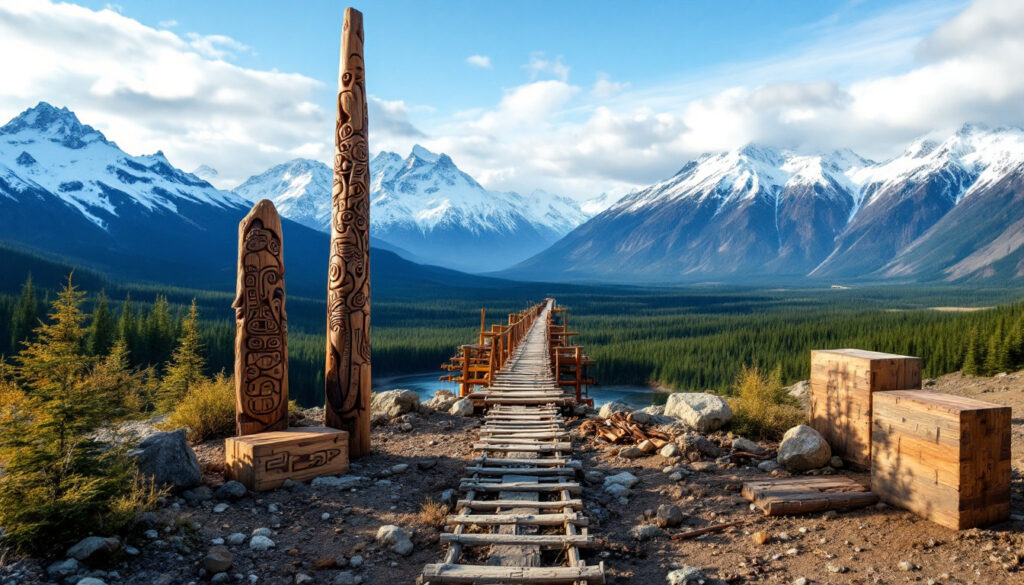In recent developments, British Columbia unveils mining claims framework and First Nations call it a step back, marking a transformative moment in regional resource management. The evolving consultation requirements have sparked robust debate among stakeholders.
What is the New Mining Claims Framework in British Columbia?
The new framework represents a fundamental shift in how mineral rights are established in the province. It introduces mandatory consultation with First Nations right at the claim staking stage, rather than after exploration permits are issued.
Furthermore, the landmark 2023 BC Supreme Court ruling in Gitxaała v. British Columbia forced this change. This decision requires early involvement of Indigenous communities, ensuring their voices are heard from the very beginning.
In addition, industry commentary highlights benefits such as improved transparency. However, some critics argue that the framework still permits decision-making authority to remain with government officials.
For instance, a seasoned analyst noted that enhanced dialogue with traditional owners could lead to better project outcomes, while concerns about delayed claim registration persist. An article on understanding the JORC code in mining investments explains related industry challenges.
How Does the New Application Process Work?
The application process now begins when holders of Free Miner Certificates apply through the Mineral Titles Online system. Initially, application fees remain unchanged despite procedural updates.
After submission, applications enter a mandatory consultation phase with First Nations. This step delays immediate claim registration, requiring companies to adjust their planning timelines accordingly.
Moreover, provincial staff now assess each application carefully. The Chief Gold Commissioner then determines whether the consultation requirement has been met sufficiently.
The process offers three potential outcomes:
• Register the claims as requested
• Register claims with modifications
• Deny the registration entirely
This tiered decision-making introduces greater uncertainty, especially for junior explorers. Articles like a beginner’s guide to investing in mining stocks provide further insights for newcomers.
What’s the Scale of Mining Claims in British Columbia?
British Columbia’s mining sector remains highly active. In 2024 alone, 5,048 mineral claims and 1,635 placer claims were registered. These figures underline the province’s continued attractiveness to the mining industry.
Additionally, the region is rich in commodities such as copper, gold, and critical minerals. In particular, areas like the Golden Triangle and Kootenay region are hotspots that attract significant investment.
Furthermore, many high-interest areas overlap with traditional First Nations territories. This geographical reality complicates the consultation process as Indigenous rights gain increased recognition.
This situation has prompted discussions on governance challenges in mineral resources. Consequently, industry experts debate whether the new framework can improve transparency and fairness.
Why Are First Nations Leaders Criticising the Framework?
Critics within First Nations communities argue the framework does not adequately honour Indigenous rights. Terry Teegee, BC Assembly of First Nations Regional Chief, asserted that the process fails to meet true consent-based standards.
Moreover, while the framework mandates consultation, critics claim it allows decision-making power to remain with the Chief Gold Commissioner. In addition, many Indigenous leaders say the process upholds “business-as-usual” practices rather than real partnership.
For example, one senior Indigenous advisor remarked that effective consultation would require changing the decision structure entirely. This perspective is underscored by recent reports on mining framework controversy.
Thus, much of the criticism rests on the gap between consultation and free, prior, and informed consent as prescribed by UNDRIP principles.
What Specific Concerns Do First Nations Have About Implementation?
There are significant concerns regarding how the consultations will be implemented. The framework obliges waiting periods that could overwhelm many small Indigenous communities, leading to “consultation fatigue.”
In addition, limited resources and staff capacity mean that smaller Nations might struggle to respond to numerous mining applications. Consequently, effective participation becomes challenging despite the legal requirements.
Moreover, questions about the cultural competence of provincial staff persist. Without proper training, meaningful engagement might deteriorate into a mere procedural formality.
These issues are echoed in discussions of esg challenges and global opportunities in mining. As a result, ensuring that communities are not sidelined remains a central challenge.
How Does This Framework Relate to UNDRIP Implementation?
British Columbia adopted UNDRIP principles through DRIPA in 2019. This legislation was intended to secure free, prior, and informed consent from Indigenous peoples before project approvals.
However, the current framework has sparked debate on whether it truly meets UNDRIP standards. Article 32 of UNDRIP calls for more than a mere consultation process, demanding genuine consent.
Consequently, many First Nations leaders feel that the framework still falls short. They argue that although consultation is an improvement, it does not grant the level of autonomy and respect for Indigenous rights required by UNDRIP.
This clash between legal doctrine and regulatory practice continues to fuel discussions in the field.
What Are the Practical Implications for Mining Companies?
Mining companies now face extended delays and increased uncertainty. Instead of immediate claim registration, they must now wait through mandatory consultation periods that could span several months.
This shift has tangible financial implications. For instance, increased holding costs coupled with unpredictable timelines create new challenges for junior mining companies. In this context, firms are increasingly focused on navigating risks and rewards in junior mining investments.
Moreover, companies must prepare detailed documentation earlier in the process. In addition, potential accommodations such as boundary adjustments or environmental monitoring may be required to secure claims.
Furthermore, these changes may impact investor confidence. Consequently, firms are recalibrating their strategies to address both operational and financial risks in this uncertain environment.
It is also worth noting that industry literature suggests that adapting to these changes can yield long-term benefits for sustainable practices.
FAQ: Common Questions About BC's Mining Claims Framework
How long will the consultation process take?
The framework does not set fixed consultation timelines. In practice, the duration varies based on claim complexity and community capacity. Companies should prepare for processes lasting from several weeks to many months.
What happens when claims are denied?
Denied claims leave companies without an automatic right of appeal. However, judicial review remains an option if procedural fairness is in question.
How are accommodations determined?
Accommodations are tailored case-by-case. They frequently include boundary adjustments, enhanced environmental protections, or economic arrangements with affected Nations.
What support is available for First Nations?
Resources vary widely. Some communities receive capacity funding, while others face significant challenges in managing increased consultation demands. Industry organisations are advocating for more consistent support.
How does this framework compare with other provinces?
British Columbia now has one of the most consultation-intensive processes. Other provinces, such as Ontario and Quebec, continue to use modified free entry systems, although they also face legal challenges.
What Does This Mean for the Future of Mining in British Columbia?
Looking forward, the framework introduces pivotal operational uncertainties and shifts in community engagement. Critics point out that further amendments may be necessary. For instance, industry voices suggest improvements through enhanced partnerships and joint ventures.
Furthermore, renewed focus on capacity building within First Nations communities is essential. In addition, articles like a beginner’s guide to investing in mining stocks offer guidance on how market players might adapt.
Notably, British Columbia unveils mining claims framework and First Nations call it a step back, reflecting broader debates over economic development versus Indigenous rights. This marks the third occurrence of the primary keyword.
In summary, the evolving policy landscape necessitates adaptive strategies for both mining companies and Indigenous communities. The balance between regulatory compliance and mutual respect lies at the heart of ongoing discussions. British Columbia unveils mining claims framework and First Nations call it a step back, underscoring the complex path ahead.
Ultimately, robust dialogue and informed decision-making are essential. As the province refines its approach, industry observers remain optimistic about future convergence. British Columbia unveils mining claims framework and First Nations call it a step back remains the final occurrence of the primary keyword.
Looking for Early Insights on Mining Regulations and Indigenous Relations?
Stay ahead of regulatory shifts with Discovery Alert's proprietary Discovery IQ model, which delivers real-time alerts on significant developments affecting ASX mining companies. Visit the Discovery Alert discoveries page to understand how identifying industry-changing developments early can position you for substantial investment returns.




